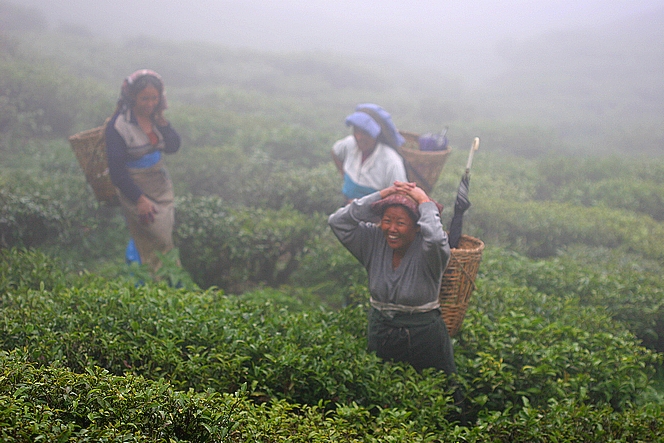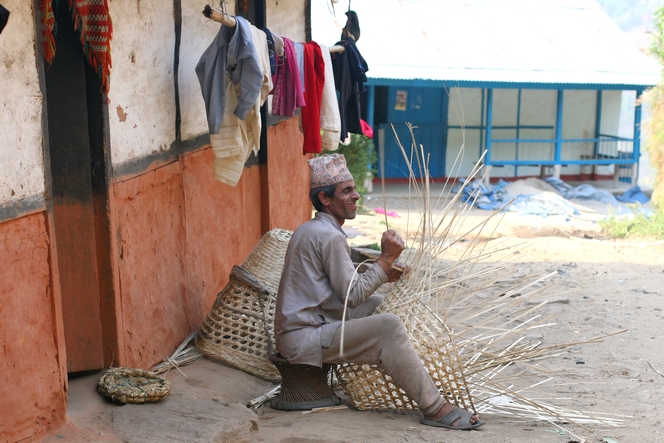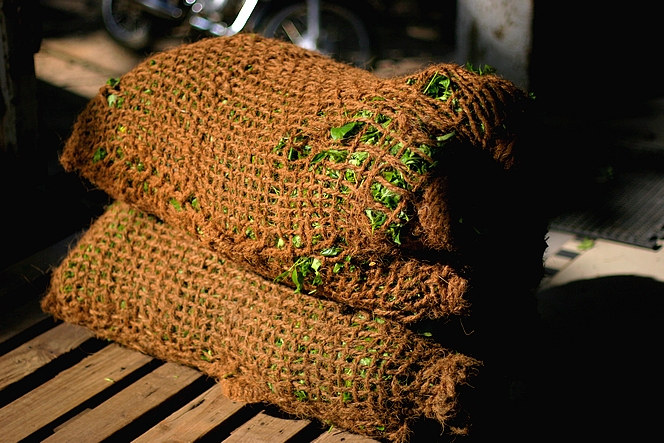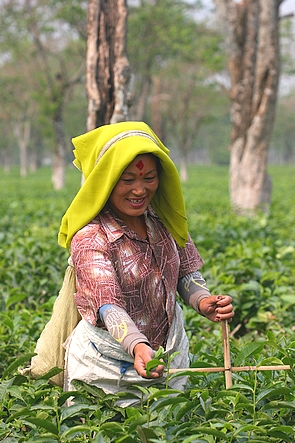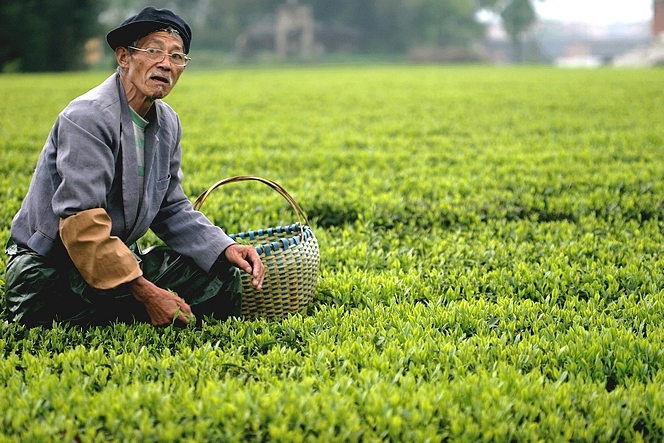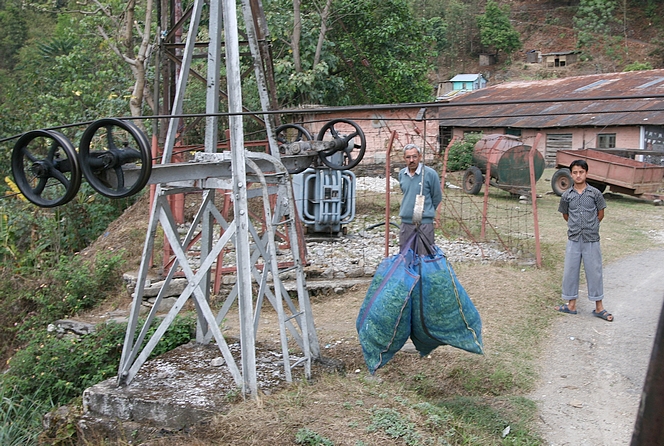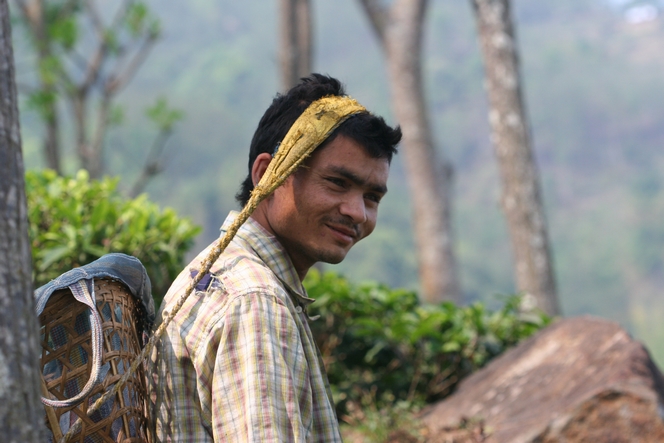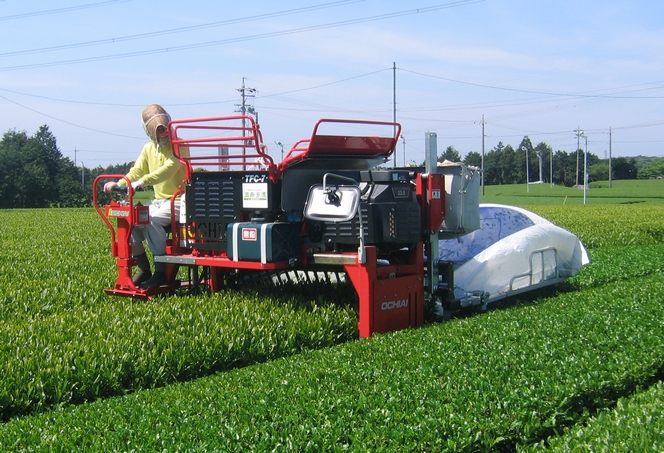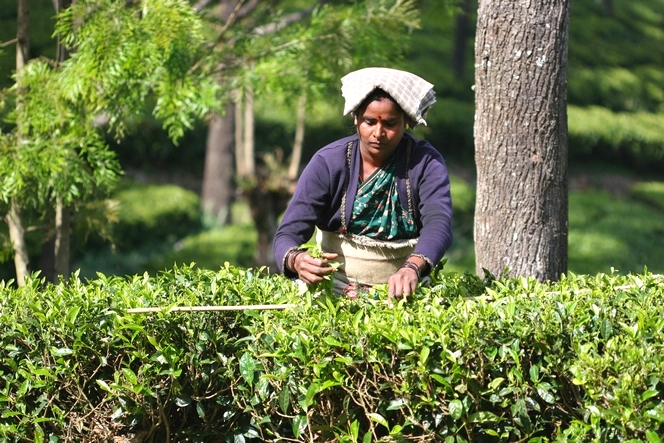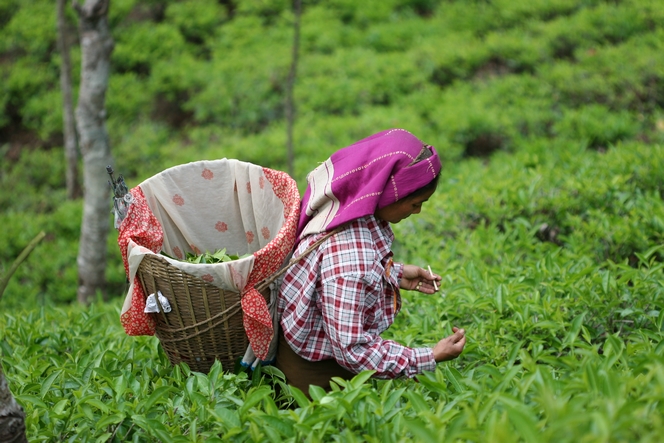In the middle of summer, a bit of freshness is always welcome. Like this refreshing mist coming from the foothills of the Himalayas. People there are so used to living in the clouds that this humidity is part of their life and no-one pays any attention to it. It’s actually not unpleasant, just look at the faces of these tea pluckers and you’ll see that no-one seems depressed by it. They look like they’re having fun, in fact.
This is at Badamtam, a magnificent plantation located in the north of Darjeeling, across from Sikkim.
Just a detail: do you see the umbrella in the basket? Well, it is actually used when the sun comes out, to provide shade and keep a nice complexion.

